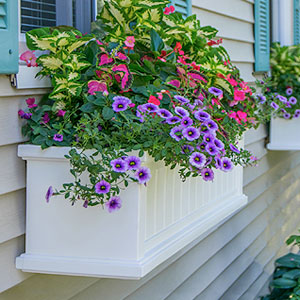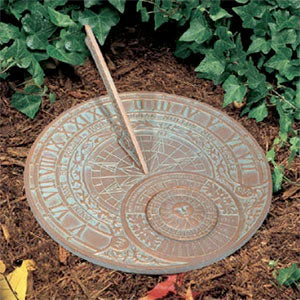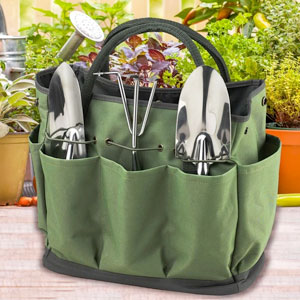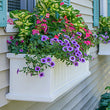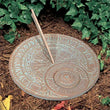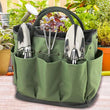Style & Design
How to Choose the Right Pot or Planter for Any Plant

With so many planter pot and container materials, sizes, and styles available, choosing the best options to encourage plant growth and enhance an indoor or outdoor space can be a daunting task. Before you buy, follow these helpful tips on how to choose the right containers to keep your plants happy and healthy.
What’s the Difference Between a Pot and a Planter?
The main differences between pots and planters are their size and function. Most pots are round and sized small to hold a single plant; many are designed to use indoors or in a partially protected outdoor space. Planters come in different sizes and shapes but are usually big enough to hold multiple plants or to accommodate a small container garden. Most planters are used outdoors.

Plant Pot and Planter Materials
Many people choose a pot or planter based on its appearance, but the material is also important because it can affect the health of the plant. Explore the most common pot and planter materials below to discover the best container for a type of plant and its location.

Plastic Pots and Planters
Plastic pots and planters are strong, flexible, and last a long time when used indoors. These cost-effective containers come in assorted colors, sizes, and shapes, ideal for matching a specific theme or décor. Since plastic is nonporous, the soil stays moist, perfect for plants that require more hydration, or for gardeners who forget to water regularly. Cyperus, selaginella, and Boston fern are examples of plants that will thrive in a plastic pot or container.
Best location for a plastic plant pot or planter: Indoors. Plastic is not biodegradable, but it does degrade in the sunlight and can fall apart when exposed to UV rays for long periods.

Terracotta Pots and Planters
Terracotta containers are made from red clay that’s molded and then baked, and takes on a tell-tale burnt orange color when iron in the clay reacts with oxygen. Terracotta pots and planters look timeless and make a clean, uniform display for a large collection of plants. This porous material allows plenty of air and water flow to prevent root rot or soil disease. Choose terracotta pots or planters for drought-tolerant plants; rosemary, jade plant, and sago palm are examples.
Best location for a terracotta plant pot or planter: Indoors or outdoors. This sturdy, durable plant pot material adds rustic flair to any setting.

Glazed Ceramic Pots and Planters
Glazed ceramic plant pots and planters are made from fine-textured, light-colored clay that is kiln-fired at a high temperature. Ceramic is one of the best materials for a plant pot or planter as it absorbs moisture, yet won't dry out quickly. Since ceramic draws moisture away, it’s the best material for plants that thrive in arid soil, or for gardeners who tend to overwater. Choose a glazed ceramic pot or planter for golden pothos, succulents, or spider plants.
Best location for a glazed ceramic plant pot or planter: Indoors or outdoors, but move your glazed ceramic indoors when the temperature dips down toward freezing to avoid cracking.

Wood Pots and Planters
While wood imparts warmth to an indoor space, this natural material also looks right at home outside on a patio, deck, or front porch. Many large garden-style planters are made of wood; they’re easy to assemble and add rustic appeal to outdoor space. Cedar, juniper, and redwood are naturally rot-resistant, but to prevent rot in pine, spruce, chestnut, and other soft wood, treat it with non-toxic paint. Wood retains water quite well, so it’s ideal for moisture-loving plants. Choose a wood pot or planter for vegetables, herbs, and butterfly-friendly flowers, including green beans, basil, and marigolds.
Best location for a wood plant pot or planter: Outdoors. Sturdy wood planters make ideal raised beds or container gardens.
Metal Pots and Planters
Metal is one of the sturdiest pot or planter materials available; it doesn’t chip, crack, shatter, rot, or disintegrate. Typical metals used in plant pots or containers include steel, aluminum, zinc, and copper, any of which looks stunning filled with greenery. If you use metal planters to create a container garden, choose rust-resistant galvanized steel that reflects heat. Metal pots and planters are nonporous, so drill a few holes in the bottom for drainage and airflow to prevent root rot. Fill your metal pots with shade-loving vegetation such as philodendrons, peace lilies, or snake plants, and keep them out of the sun to avoid overheating the plant roots.
Best location for a metal plant pot or planter: Indoors or outdoors in a protected location. When left out of the elements, metal plant pots and planters can last nearly forever.

Polyresin Pots and Planters
There are several good reasons polyresin is a popular material in outdoor patio furniture: It’s lightweight, sturdy, and weather-resistant. Polyresin plant pots and planters won’t rust or degrade, they stand up to wear and tear, and they require very little maintenance. Durable, flexible polyresin can endure extreme temperature fluctuations, so it’s ideal for outdoor use. And with so many styles, shapes, and colors available, polyresin plant pots and planters can fit in with any indoor décor. Choose this nonporous material for plants that thrive in moist soil, including ferns, polka dot plants, and calatheas.
Best location for a polyresin plant pot or planter: Indoors or outdoors. Polyresin is weather-resistant enough to withstand extreme temperatures but also complements interior décor.
How To Choose the Right Size Plant Pot or Planter
Every plant needs enough space to grow, so choose the right size pot or planter from the start. Opt for a pot or planter at least two inches in diameter larger than the plant. This provides ample space for the plant to spread its roots and continue growing strong.

Best Size Pots for Houseplants, Trees, and Outdoor Gardens
Most houseplants, from succulents to African violets, do well in standard pot sizes that range from 2 to 7 inches in diameter. Choose a pot 10 inches or wider for large indoor trees such as yucca, rubber plant, and parlor palm. Planters and pots from 14 to 30 inches in diameter are ideal for outdoor use.
- 14” pots are best for smaller plants including herbs, leafy greens, peas, and marigolds.
- 18” pots work well for bush plants like peppers, tomatoes, and small shrubs.
- 24” pots hold large plants with deep roots, including pomegranate trees, and dwarf peach trees.
- 30” pots are ideal for large trees you will eventually plant in the ground. But some trees can live their life in a pot, including apple, plum, and pear.

Repot Plants When the Time Is Right
Resist the urge to choose a large pot for a small plant with the assumption that you won't need to repot it later. The soil in a large container typically stays wet longer, which can lead to root rot and yellow leaves, and can even kill the plant. Stick with the right size container now and repot when the plant outgrows it.
When repotting, choose a new pot or planter at least two inches wider in diameter than the existing container, and then:
- Fill the new pot with a few inches of fresh soil.
- Remove the plant from its pot and gently loosen the roots.
- Place the root ball into the center of the new pot and cover it with fresh soil.
- Water well.
Now that you know how to choose the right pot or planter for any plant, explore our tips on how to create a container or planter garden, or learn how to transform your backyard into a relaxing, restorative garden sanctuary.

